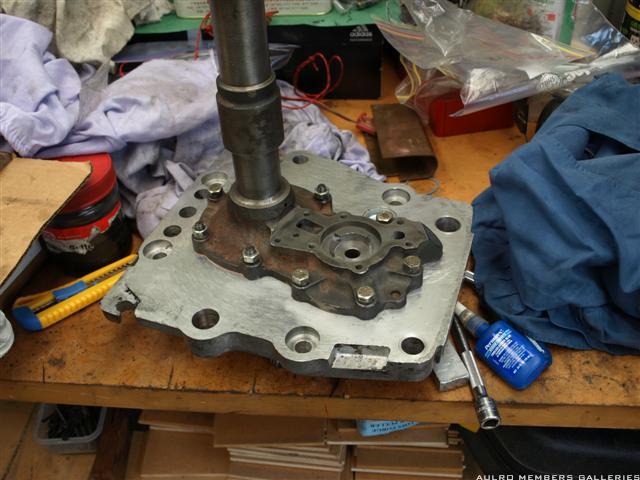Just a couple of points at this stage Steve.
If the synchro hubs have been dimantled, in many instances they won't reassemble just on any splines.Either mark the hub and collar before dismantling,as shown on your front view photo of 3rd/4th synchro or try assembling one spline at a time to find a match that slides together smoothly before fitting springs and balls.
Question. are you going to have section on how to identify components that may need replacing?
Anyone following this rebuild guide would realize by now that aside from the transfercase internals, these are not the type of transmission that lends it self to being fixed up at the bottom of some remote sand dune or similar, so in the interest of vehicle and occupant survivability I offer an untried and tested modification suggestion.
I have never owned a vehicle with an Lt95, but thought if I ever did that I would look at modifying the front of the mainshaft and the input shaft to accept either a taper roller bearing to replace the parrallel roller pilot bearing, or fit a torrington needle thrust bearing behind the parrallel roller bearing.
I've seen quite a few mainshafts where the spline segments have broken off behind the circlip groove that retains the t/case mainshaft gear in place,allowing the mainshaft to float forward with disastrous results.I feel the afore mentioned modification would relieve the circlip of some of the hammering it cops from the main gearbox gears from drive to coast.In the event of a circlip or groove failure only the mainshaft gear could float(this could be addressed too)rearwards in reverse gear,but the main gearbox shouldn't suffer any damage.
Wagoo.





 of lowering the shaft and gears into the case and through the rear main bearing. The problem is that there is a web/bridge in the case that prevents you lowering it straight in, so you have to drop first gear and its bearings in first, then assemble them back onto the shaft inside the box.
of lowering the shaft and gears into the case and through the rear main bearing. The problem is that there is a web/bridge in the case that prevents you lowering it straight in, so you have to drop first gear and its bearings in first, then assemble them back onto the shaft inside the box.



 Reply With Quote
Reply With Quote






Bookmarks